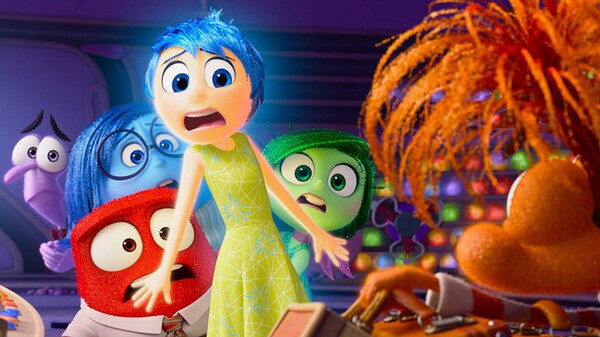Maleficent 2. The Mistress of Evil: If Only Love Builds
When Maleficent came out (a 2014 Disney movie directed by Robert
Stromberg), someone conjectured that the kiss with which Maleficent
awakened Princess Aurora – fallen into a perennial sleep, after pricking
her finger with the needle of a haunted spinning wheel – was a sign of the
director’s sympathies to the LGBT world. It was seen as a gesture to
promote “true love” between two women, in this case between the historic
antagonist – here redeemed – and Sleeping Beauty, Princess Aurora.
This theory, already questioned in my previous
review
– where I showed that the proposed love was a mother/daughter sort, not
homoerotic type – was definitively denied by the plot of the Maleficent
sequel (Maleficent 2: The Mistress of Evil), directed by Joachim
Rønning, 2019, whose protagonist is once again played by Angelina Jolie.
A “Classic” Love Story
The story begins with the marriage proposal that Prince Philip makes to the
beautiful Aurora. Philip, Aurora’s only beloved in the fairy tale Sleeping Beauty, is presented here as the heir to the throne of
the kingdom of Ulstead.
One senses immediately that the two are bound by genuine, sincere feelings:
they intend to make their dream of love come true and unite the two
kingdoms, guaranteeing everyone a peaceful future.
It’s too bad that their families are hindering this plan: Queen Ingrith of
Ulstead, mother of Prince Philip and Maleficent, Aurora’s Fairy Godmother,
whose famed “evilness” has never diminished, despite having stopped doing
evil acts. Maleficent, hurt by gossip, wants nothing to do with Philip’s
family members or humans in general.
Quite a Realistic “Fantasy” Film
Even though it is a fairy tale, it shows with extreme realism the dynamics
of the disagreements that arise in every day life, among families,
countries, and people in general.
How many times great expectations are hindered by greed, envy, and personal
selfishness! How often pride, arrogance, and resentment prevent us from
focusing on the happiness of those we love and live in peace…
The writer and director of the film sheds light on this. During the welcome
dinner where the families of the future spouses meet, all the hidden
resentments come to the surface, and right there at the table, where the
two would like to celebrate their upcoming wedding, a conflict begins.
Maleficent is overcome with anger due to the queen’s taunts. She announces
that there will be no marriage.
At that moment, King John – Philip’s father and promoter of peace between
the two kingdoms – falls into a deep sleep, as if struck by a spell.
Everyone, including Aurora, believes that Maleficent cast the spell, but as
the viewer will see throughout the film, evil often masquerades; things
aren’t always as they seem.
Real Villains Know How to Masquerade as Good
The film has the merit of showing how the true wicked are often the most
unsuspected: the calm calculators, the hypocrites who smile and kill
without even using violence.
The real villains often wear beautiful clothes and jewels. They don’t have
horns like Maleficent. They do not explode with anger when provoked, but
they act in secret, to achieve their goals. They do not become violent, but
on the contrary, give kisses and hugs to buy the respect of those they want
to deceive.
If Maleficent acts impulsively, someone else, evil, constructs the evil
quietly and artfully.
War is Never the Answer
And yet, even when faced with such deceitful behavior, the “right” answer
cannot be hatred: if the first message of the film is to not trust first
impressions, the second is to never see war as a solution to evil.
Following the spell cast on the king, chaos takes over. Both the creatures
of Maleficent’s world and the humans of the kingdom of Ulstead are tempted
to resolve conflicts through war. However, the film shows us on several
occasions how it only sows evil instead of eradicating it.
The writer is clear and reaffirms the concept in many ways: one should
never give in to violence and destroy one’s enemy. Peace is possible only
if one renounces to seek payback from the person who first committed an
evil act.
Revenge, even if it seems to be the right answer, is actually a vortex
without a way out. “Just wars” should not be fought. Alternatives to war
should simply be found.
Hate Destroys, Love Builds
Aurora summarizes this message at the end of the film, when, seeing
Maleficent blinded by anger, intent on killing the Queen, she blocks her
and tells her: “I know you. You are not this. There is another way…”
At that moment, Maleficent’s gaze changes. It softens. She believes in her
“daughter’s” words and renounces her vengeful plans. Shortly after, instead
of taking the Queen’s life, she will come to give her own in order to save
Aurora.
It is the revolution of love. It is the revolution that changes the story.
Offering life rather than taking it away, we are victims only in
appearance. In reality, we become heirs of a new world.
He who gives his life, like the protagonist of the film, cannot be
destroyed by anything, not even by death. Those who choose love, those who
choose light, will prevail over the darkness of death.
For Whom Is the Movie Recommended?
For its messages, the film is recommended to everyone. However, in some
respects, it is perhaps more suited to an audience of adolescents/teenagers
and adults than to children of a young age. Although there are no bloody
scenes, some “supernatural events” are presented in a way that could upset
children (like the ritual with which winged creatures, similar to
Maleficent, accompany the departure of one of their mates). These elements,
which could have been avoided – and some inconsistencies in the narrative –
are the weak points of a film with otherwise great potential.















